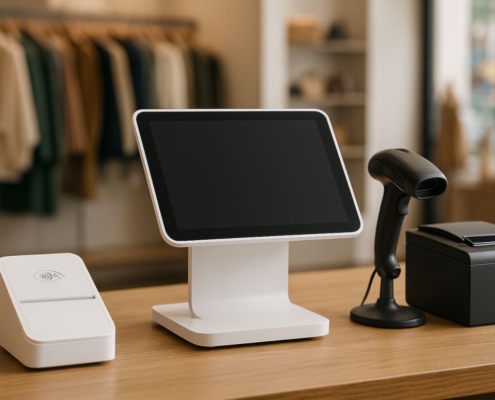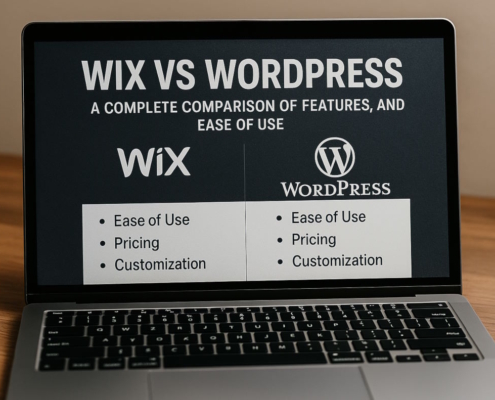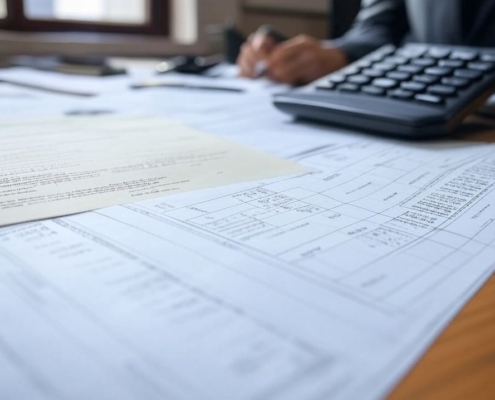What is the definition of a variable cost?
An expense that fluctuates in relation to the amount of production or sales is known as a variable cost. Depending on the company’s production or sales volume, variable costs can go up or down. They go up when production goes up and down when production goes down.
Companies’ raw material and packaging costs, as well as their shipping and credit card processing fees, are examples of variable costs. These factors increase or decrease as a result of changes in sales. One way to look at costs is as either fixed or variable.
Learning about variable costs
A company’s overall spending includes both variable and fixed expenses. The production output or sales determine the variable costs. Each unit produced has a set variable cost of production. A company’s variable costs will rise in tandem with its production volume and output. On the flip side, production-related variable costs will go down as output goes down.
The price of raw materials, utilities, direct labor, and sales commissions are all examples of variable costs.
Methods for determining variable costs
To find the total variable cost, just multiply the amount of output by the variable cost for each unit of output:
Total Variable Cost = Variable Cost Per Unit of Output x Total Quantity of Output
Costs per unit will change depending on how much money an organization makes. In general, you can figure it out by adding up the different types of variable costs we’ll talk about below. If you buy raw materials in bulk (say, 100 pounds to make 10,000 finished goods), you may have to divide up the variable costs among all of those goods.
Different Variable Cost Types
Certain items that are typically considered variable costs are those that are involved in the manufacturing process. Think about the production and shipping procedures of a big sportswear manufacturer to get a feel for these variable costs in action.
1. Raw Materials
Purchasing raw materials is the first step in making a finished product. The athletic brand can avoid paying for materials like canvas, synthetic mesh, leather, and other raw materials if it doesn’t manufacture the shoes. Assuming no significant differences in manufacturing between units, a company should typically spend approximately the same amount on raw materials for each unit produced.
2. Direct Labor
Production volume also affects the direct labor cost. A good illustration of this is the absence of direct labor cost in the absence of unit production. Direct labor costs rise in direct proportion to unit production. Nonetheless, there will be some labor expenses regardless of output. Accountants and lawyers employed by the company, for example, may continue to receive salary payments regardless of production volume.
Nothing will change in terms of pay for these workers as a function of output quantity. Some people’s income is directly proportional to the number of hours they put in physically working for their employer.
3. Commissions
Commissions are a kind of additional compensation that companies often receive as a percentage of the proceeds from sales. Commission expense is non-existent in the absence of any sales. The cost changes (i.e. is variable) as a function of the salesperson’s activity level because commissions rise and fall according to whatever underlying criterion they must meet.
4. Utility services
The production line starts to use energy as soon as it starts turning on equipment and increases production. Utilities are typically turned off when production is finished and all systems are turned off. In this case, the utilities typically change as production does. Increases in variable utility costs are a natural consequence of any business’s drive to maximize output, since increased energy consumption is a direct outcome of increased power consumption.
5. Shipping/Freight
Costs associated with packaging and shipping will only arise in the event that a specific action is taken. Thus, the shipping cost of a finished good changes (i.e. is variable) as the quantity of units shipped does. Certain aspects of shipping may have fixed costs (such as an internal mail distribution network that offers a range of products for personalized weighing and packaging), but many of the additional expenses are subject to change.
The Value of Analyzing Variable Costs
Numerous analyses of costs, prices, and profits are possible with variable costing data. The following are some of the many reasons why VCA is crucial:
Prices are based in part on variable costs. To recoup their production costs, most businesses aim to sell their wares at prices that are competitive in the market. A business can learn more about its product inputs and the revenue per unit it needs to generate by conducting a variable cost analysis.
Budgeting and planning cannot be complete without considering variable costs. In an effort to scale revenue, a company might aim to quadruple production next year. It can’t do this without anticipating a corresponding rise in variable costs. Changes to variable costs are a likely outcome of any growth, contraction, or product expansion strategy plans.
To find out when you’ll break even, look at your variable costs. Divide fixed costs by contribution margin to get the break-even point for a business. Revenue minus variable costs is the formula for contribution margin. Using variable cost analysis, a business can figure out how many products it needs to sell in order to break even and how many more it needs to sell in order to earn a certain amount of money.
Gross profit and profit margin are both affected by variable costs. It is common practice to include both fixed and variable costs when calculating gross margin, profit margin, and net income. A business can quickly see the effects of increasing or decreasing production on profit projections by running a variable cost analysis.
A business’s spending pattern is affected by variable costs. Picture this: a business is interested in renting some machinery. The company has the option of paying a fixed cost of $1,000 or paying $0.05 for each product it makes. Because leverage is dependent on a company’s expense structure, this choice will significantly affect the company’s profitability and earning potential.
Comparison of Variable Cost and Average Variable Cost
Average variable cost and variable cost may sound like they mean the same thing, but they actually mean very different things. Although the term “variable cost” is typically used to refer to the variable costs associated with a single product, the term “average variable cost” is frequently used to consider production over a period of time and compare variable costs to what has been created. Here is the formula for calculating the average variable:
Average Variable Cost = Total Variable Costs / Total Output
Due to price increases or discounts, the average variable cost and variable cost may not always be equal. Think about the ongoing expenses associated with a long-term project. A worker’s hourly wage is a variable cost, but that worker got a promotion last year. While average variable costs will stay around the same, current variable costs will be higher.
Visual representations of average variable cost typically show a U-shape. In this way, average variable costing can help a business determine the optimal point of production by determining when to temporarily halt production or even shut down an entire plant.
Comparison of Variable and Fixed Costs
A company’s fixed costs are its outlays that won’t change no matter how much they make. A company has to pay its fixed costs regardless of sales because these costs don’t change regardless of production.
Fixed expenses include things like rent, insurance, salaries, and office supplies. The amount of products made and sold has no bearing on a company’s ability to pay the rent for the space it uses to conduct its business.
Rent will remain constant regardless of whether a company’s output goes up or down. Despite the fact that fixed costs are subject to change over time, any such changes will have little to do with production and are thus considered to be long-term expenses.
A third type of expense, semi-variable costs (sometimes called mixed costs or semi-fixed costs), sits between the two extremes of fixed and variable expenses. A combination of fixed and variable components make up these costs. When production or consumption reaches a certain level, costs remain constant; however, once this level is surpassed, costs start to fluctuate. It is common practice to incur a fixed cost even in the absence of production.
Particular Factors to Bear in Mind
1. Relevant Range
While relevant range is most often associated with fixed costs, it can also apply to variable costs. Expenses related to labor (e.g., overtime pay after a specific number of hours worked) and physical products used in product production may be subject to this rule. Think about using tiered pricing for goods ordered in bulk at a wholesale level.
Consider a scenario where the initial 1,000 pounds of raw materials cost $0.50 per pound. But there is a $0.48 surcharge for orders that exceed 1,000 pounds of raw material. The raw material charge (either $0.50/pound or $0.48/pound) is the variable cost in both cases.
The variable expenses of a business are detailed in the cost of goods sold (COGS) section of the balance sheet. This metric assesses the expenses that are directly associated with making a product, including things like labor and raw materials. Typically thought of as a variable cost, COGS can also contain fixed costs like overhead.
2. Degree of Leverage
The mix of variable and fixed expenses determines a company’s operational leverage. Fixed costs, in a nutshell, are riskier, lead to higher leverage, and provide more room for profit for the business. Conversely, variable costs are less risky, don’t create as much leverage, and limit the company’s potential for profit.
Take the preceding scenario, in which a business must decide whether to rent equipment for $1,000 or pay $0.05 per unit:
- It is $999.95 more advantageous to go with the per-unit price if the company only produces one unit of output.
- The two choices equalize if the business produces 20,000 units of output.
- Choosing the fixed price is $49,000 better if the company produces 1,000,000 units of output.
- If output is below 20,000 units, the business might incur losses. Above this, though, the possibilities for profit to the business are practically endless. Thus, as long as the firm can generate sufficient output, leverage compensates it for not selecting variable costs.
3. Contribution Margin
The contribution margin, or the amount of money a business keeps after deducting its variable costs from sales, is directly related to its variable costs. Following the payment of all fixed costs, each dollar of contribution margin goes straight into profit.
Companies attempting to ascertain their break-even point must, therefore, include variable costs. Furthermore, in order to establish sales goals for a particular profit objective, variable costs must be considered.
A Variable Cost Example
Assume for a moment that the total cost of producing one cake for a bakery is $15. This includes $5 for ingredients like sugar, milk, and flour, and $10 for the direct labor required to bake the cake.
The bakery’s variable costs rise in direct proportion to the amount of cakes produced. When there is no cake in the oven, the bakery’s variable costs are zero.
The overall expense consists of both fixed and variable expenses. How much money a business makes is dependent on its total cost, which is:
Profits = Sales – Total Costs
Reducing total costs allows a company to improve its profits. Because it is more difficult to decrease fixed costs (such as rent, which could require the company to relocate to a cheaper location), most companies instead aim to decrease variable costs. Most of the time, lowering costs means lowering variable costs.
The bakery will make $20 in gross profit per cake if it sells them for $35 each. One must subtract the fixed costs from the gross profit in order to determine the net profit.
If an organization’s fixed expenses exceed its gross profits, it will experience a loss. With only 20 cakes sold each month, the bakery’s gross profit is $400 (after subtracting $300). It would incur a $500 loss in sales due to the fact that its fixed cost is $900, which is greater than $400. At the break-even point, there are no more gains or losses because fixed costs have equalized the gross margin. If the bakery has a total variable cost of $675 and sells 45 cakes, it will break even.
Cutting down on raw material, direct labor, and advertising costs—all of which can rise and fall with the market—may help a business achieve its goal of increasing profit by reducing variable costs. Cutting corners on product or service quality in the name of cost savings would be a bad move for sales. A company can boost its contribution margin or gross profit by cutting its variable costs.
Management is able to ascertain the potential revenue and profit from each sold unit by calculating the contribution margin. The formula for determining the contribution margin is:
Contribution margin = Gross profit / sales = (sales – variable costs) / sales
For the bakery, the contribution margin is 57.14%, which is calculated as ($35 – $15) / $35 = 0.5714. By cutting its variable costs to $10, the bakery can increase its contribution margin to 71.43% ($35 – $10) / $35. As the contribution margin rises, so do the profits. For every $1 in sales, the bakery could make $0.71 if it could cut its variable costs by $5.
What Kinds of Costs Are Variable?
A few examples of common types of variable costs are commissions, raw materials and inputs to production, wages, packaging, and utilities (such as electricity or gas, which rise in tandem with production capacity).
What is the Difference Between Variable and Fixed Costs?
In contrast to fixed costs, which remain constant regardless of output, variable costs fluctuate in direct proportion to the cost of producing a good or service. Cost of goods sold (COGS) is a popular term for variable costs; fixed costs are typically not included in this term. Factors like sales commissions that are a part of the per-unit production cost can make variable costs sensitive to changes in sales and production levels. Meanwhile, fixed costs are non-negotiable regardless of how much output drops.
What Effects Can Variable Costs Have on Profitability and Growth?
Businesses can expect an increase in variable costs as a result of increased production in response to demand. Perhaps expanding isn’t a good idea if these expenses are rising faster than the revenue from additional units made. In this situation, a business must determine why it is unable to take advantage of economies of scale. As production volume increases, economies of scale cause variable costs to fall as a proportion of total cost per unit.
Are Variable Costs and Marginal Costs the Same Thing?
No. Simply said, marginal cost is the amount it costs to manufacture one more unit. The sum of all production expenses, including fixed and variable costs, will be considered in the marginal cost. But fixed costs won’t add much weight to production scaling up because they won’t change.
How Can I Find the Total Variable Cost?
In theory, there will be the same amount of variable costs for every unit of output because they scale along with the production. Multiplying the overall output quantity by the unit variable cost yields the total variable costs.
In Conclusion
There are many distinct kinds of expenses that might arise throughout production. Variable costs are one type of cost profile; they rise in tandem with output quantity. In contrast to variable costs, which tend to fluctuate with each additional unit produced, fixed costs stay constant over a relevant range.
While this cost structure safeguards a company from falling demand for their goods, it restricts the potential for upside profit that could have been achieved with a strategy that focuses more on fixed costs.































